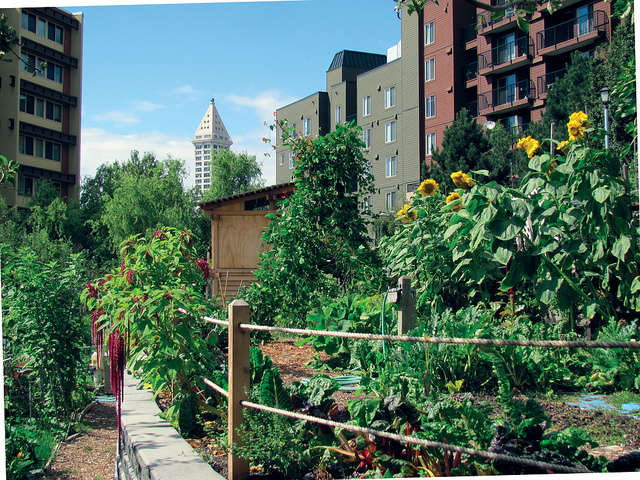An Unbiased View of City Blooming
Wiki Article
City Blooming - An Overview
Table of ContentsThe Ultimate Guide To City BloomingFacts About City Blooming Revealed3 Simple Techniques For City BloomingThe 5-Minute Rule for City BloomingNot known Details About City Blooming
Interested in growing food for sale in the City of Chicago? Thinking regarding starting an area yard? Changes to the Chicago Zoning Ordinance permit agricultural uses like neighborhood yards and city ranches in many parts of the city. Below is a checklist of regularly asked inquiries pertaining to the policies and guidelines that cultivators need to consider when intending a metropolitan agriculture project.
The zoning amendment does not modify any kind of other codes taking care of composting, structure authorizations, acquiring or renting City owned home, organization licenses or ecological contamination. There are existing codes that regulate these concerns and they stay completely impact and might be appropriate to your project. Community gardens are usually possessed or managed by public entities, public organizations or community-based organizations and maintained by volunteers.
Urban ranches grow food that is intended to be marketed, either on a nonprofit or for-profit basis. Due to their commercial objective, city ranches require a service certificate.
Some Known Factual Statements About City Blooming
Composting is permitted but just for plant material that is created and utilized on website. The quantity of compost material can not surpass 25 cubic lawns at any given time according to the standards in 7-28-715 of the City's Municipal Code. Yes. Since the dirt at most new garden sites requires changing, garden compost, dirt, wood chips, or various other materials can be acquired to create or improve the expanding area - urban gardening.
If a structure license is needed then the hoophouse will be considered an accessory structure. You can figure out more concerning the structure license requirements by calling the Division of Buildings. The 25,000-square-foot dimension limit is planned to prevent a solitary neighborhood garden from controling a given block or taking away from the block's existing domestic or business character.
The restriction does not put on gardens situated in Public Open Space (POS) areas. Can there be greater than one community yard that is 25,000 square feet on a solitary block? Yes. The dimension limitation relates to individual yards, not to private blocks. No. Secure fencing is not needed, however, yards that have large car park areas might be required to set up secure fencing or other landscape design attributes.
What Does City Blooming Do?
B1 & B2 areas need that all business use tasks be carried out inside. R districts limit business activity. The policies show the function and intent of the Zoning Code. Is fencing required for urban ranches? Yes. Fencings may be required, together with landscaping and screening, for sure parking lot and outside work or storage areas depending on location and the certain task occurring.Yes. Urban farms call for structure licenses and zoning approvals prior to construction. Various other forms of city testimonial might be required depending upon details frameworks, tasks, dimension, landscape design, licensing, public heath and stormwater management concerns. A number of these needs are determined in the project layout or permitting process, however, the candidate may be responsible to individually determine particular licenses or permits that might be called for.
Yes. The type of certificate is figured out by what is happening at the website. The Division of Company Affairs and Consumer Protection can assist identify the particular kind of organization permit that's called for. Yes. Off street car parking is needed for a lot of industrial projects in visit the site Chicago. The required variety of car parking rooms is based upon the variety of employees functioning on site and not the square video footage of the growing room.
See This Report about City Blooming

Yes. An urban ranch can sell garden compost product created on site, however, the operation must comply with the guidelines in 7-28-715 of the Chicago Municipal Code. Yes. Aquaponic systems are permitted indoors on urban farms in lots of zoning districts. Nevertheless, a zoning evaluation and structure authorization is needed in order to mount structures or systems and a business license is required as described above.
As much as 5 hives or swarms of honey might be kept as an accessory use. Beekeepers should register with the Illinois Department of Farming. For additional information concerning the recommended zoning change you may speak to the Division of Housing and Economic Growth, Bureau of Preparation and Zoning at 312.744.8563.
, which takes location in country locations at the side of residential areas.
City Blooming Can Be Fun For Everyone
It can involve a motion of natural farmers, "foodies" and "locavores", that seek to create social media networks based on a common ethos of nature and neighborhood holism. These networks can create using formal institutional support, ending up being integrated right into local community planning as a "change town" activity for lasting metropolitan development.Some of the very first proof of metropolitan farming comes from Mesopotamia.
Report this wiki page